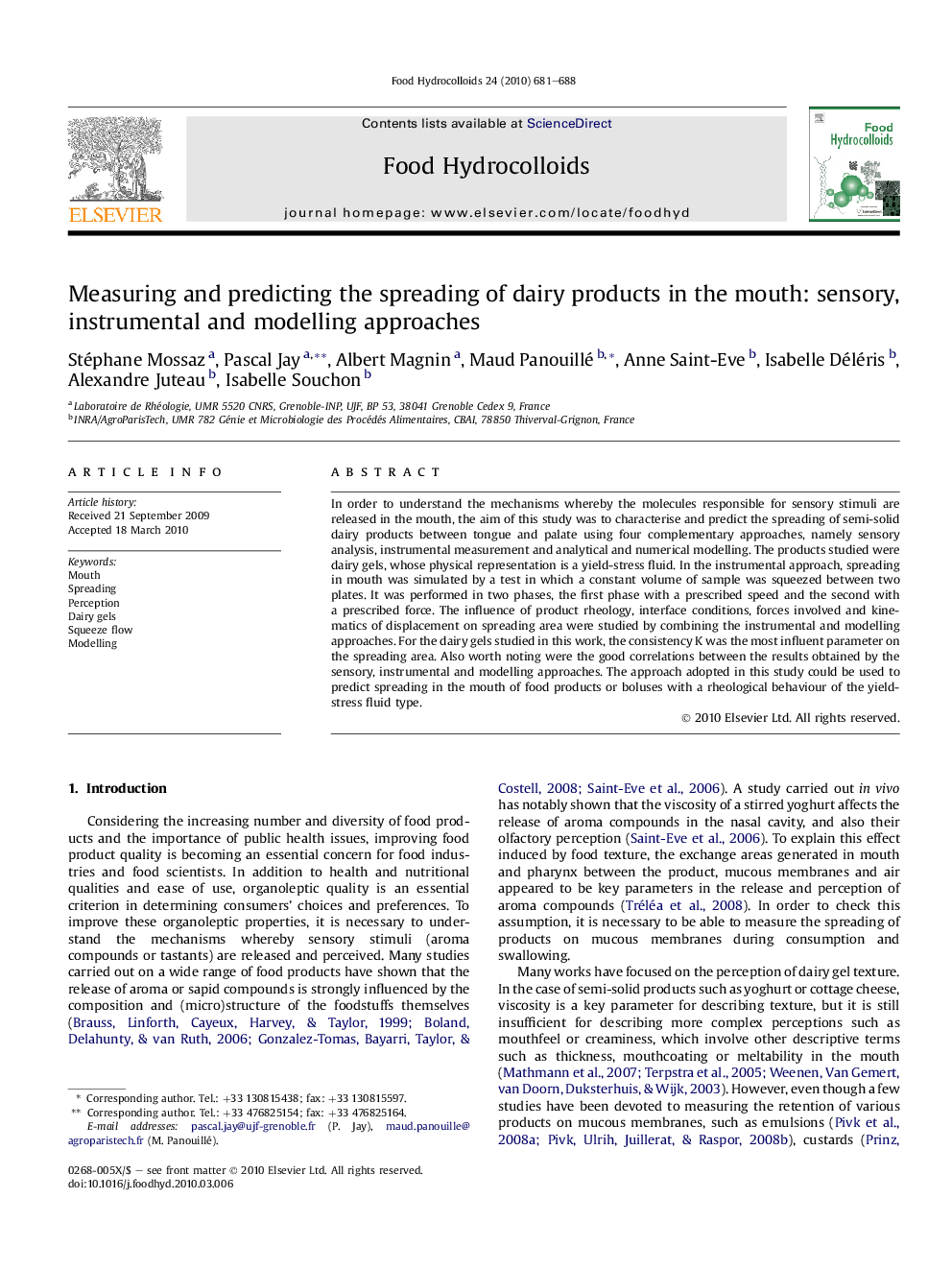| Article ID | Journal | Published Year | Pages | File Type |
|---|---|---|---|---|
| 605287 | Food Hydrocolloids | 2010 | 8 Pages |
In order to understand the mechanisms whereby the molecules responsible for sensory stimuli are released in the mouth, the aim of this study was to characterise and predict the spreading of semi-solid dairy products between tongue and palate using four complementary approaches, namely sensory analysis, instrumental measurement and analytical and numerical modelling. The products studied were dairy gels, whose physical representation is a yield-stress fluid. In the instrumental approach, spreading in mouth was simulated by a test in which a constant volume of sample was squeezed between two plates. It was performed in two phases, the first phase with a prescribed speed and the second with a prescribed force. The influence of product rheology, interface conditions, forces involved and kinematics of displacement on spreading area were studied by combining the instrumental and modelling approaches. For the dairy gels studied in this work, the consistency K was the most influent parameter on the spreading area. Also worth noting were the good correlations between the results obtained by the sensory, instrumental and modelling approaches. The approach adopted in this study could be used to predict spreading in the mouth of food products or boluses with a rheological behaviour of the yield-stress fluid type.
Graphical abstractFigure optionsDownload full-size imageDownload as PowerPoint slide
